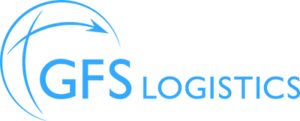Reverse logistics; the process of managing returned products and materials, has long been a headache for retailers and other businesses. It’s a big deal in logistics. So big that major industry leaders like UPS acquired reverse logistics partners to streamline their processes.
However, not every brand can afford to purchase Happy Returns. Fortunately, several emerging new technologies can help dramatically improve reverse logistics operations for businesses working with a third-party logistics team like GFS Logistics located just outside Dallas, Texas (a major hub for logistics operations).
From AI-powered automation to real-time tracking sensors, technology can optimize returns management, reduce costs, and provide better visibility.
Let’s look at some of the most impactful technologies enabling next-generation reverse logistics capabilities.
Automating Processes with AI
Let’s start out with the obvious, reverse logistics is hugely labor-intensive, requiring employees to manually handle, inspect, and route returned items.
Your customers expect swift returns and replacements. Fortunately, artificial intelligence is now being leveraged to automate elements of this workflow.
AI-powered robots can autonomously unpack and sort returns, identifying key product characteristics.
Once the item is verified, AI assesses returned items for quality, defects, and resale opportunities.
AI provides optimized sorting and routing of returns while reducing reliance on error-prone manual processes.
Companies like DHL, FedEx, and our very own GFS Logistics has begun implementing AI in return centers, increasing processing volumes and speed.
Improving Forecasting with Predictive Analytics
Unpredictable return volumes make reverse logistics challenging to manage. Predictive analytics tools can analyze past return patterns and identify leading indicators to forecast return rates accurately and prepare a warehouse for the imminent rush.
For example, analytics provider Clear Returns helps retailers predict return levels during peak periods. Companies can even leverage data to model expected return rates for new products based on relevant attributes.
With improved forecasts, businesses can efficiently staff return centers and optimize inventory allocation to handle influxes. Predictive analytics takes the guesswork out of capacity planning.
Embedding Tracking Sensors for End-to-End Visibility
Lack of visibility into return shipments leads to products getting lost or delayed in transit. Embedded sensors give real-time tracking capabilities and streamline reverse logistics monitoring.
Startup Tagbox embeds tiny wireless tags into packages that relay location data back to shippers. Syft uses image recognition on tagged items to track returns through multiple hand-offs. This granular data facilitates reverse logistics automation and helps achieve successful handling..
Optimizing Routing from Dallas TX with Dynamic Scheduling
Inefficient routing leads to higher transportation costs and delays for returned items. Dynamic scheduling systems powered by machine learning can optimize return shipment routes.
Logistics software analyzes factors like real-time traffic, vehicle capacity, and urgent priority returns to generate optimal sequences and routes. These algorithms even identify opportunities to consolidate returns with forward fulfillment deliveries.
Companies like GFS Logistics utilize these new pieces of tech to reduce mileage and streamline return transportation. Our efforts lead to retailers gaining better delivery speed and lower freight spending.
Enhancing Decision-Making with Return Analytics
Data analytics applied to return data uncovers invaluable insights for operational and strategic improvements. Analyzing return frequencies, root causes, seasonality, and other trends guides policy changes to reduce return rates.
For example, data may reveal sizes/colors with disproportionate returns due to improper fit. Retailers can then adjust product specifications to lower return levels.
Experience the Future of Technology-Enabled Reverse Logistics With GFS Logistics
As returns continue to grow, technology will be crucial for creating efficient, sustainable reverse supply chains. Companies investing in solutions like AI, IoT sensors, and advanced analytics will gain advantages over the competition.
Rather than invest in these technologies on your own, partnering up with Dallas-based GFS Logistics wil provide you with the optimized supply chain you need to ensure reverse logistics aren’t a major problem.
We aim to create a better customer experience for consumers and drive loyalty and revenue to your brand.
Contact us today to learn more about our services.


